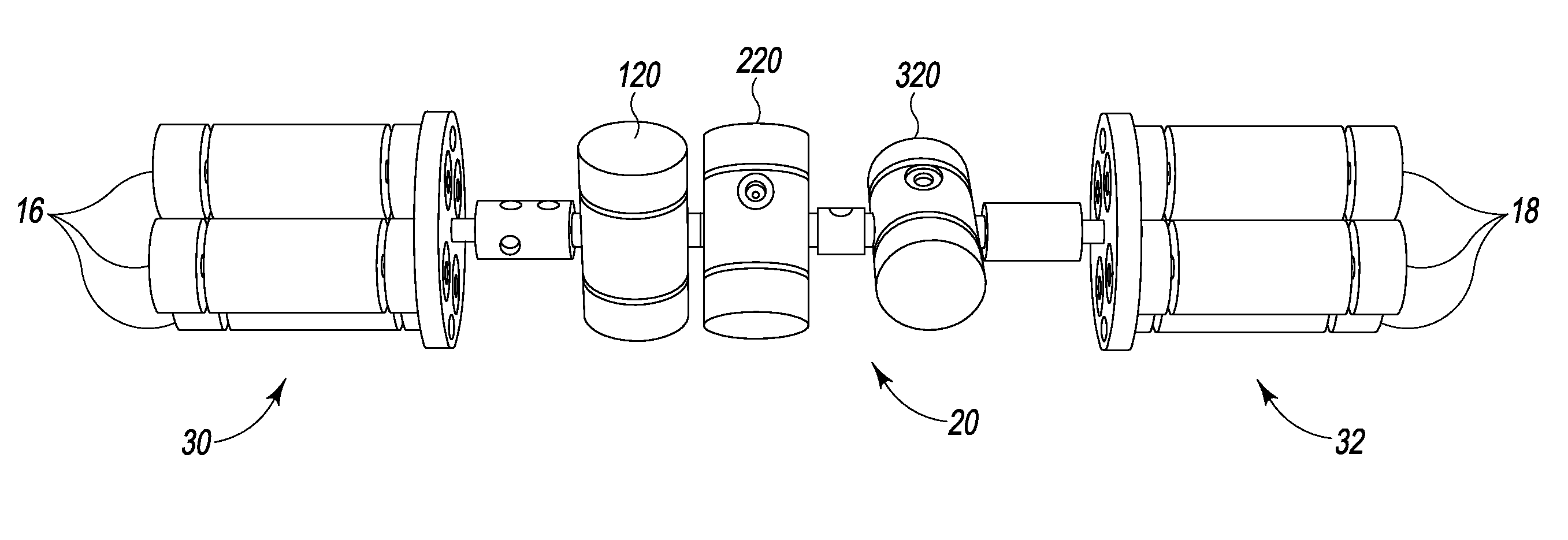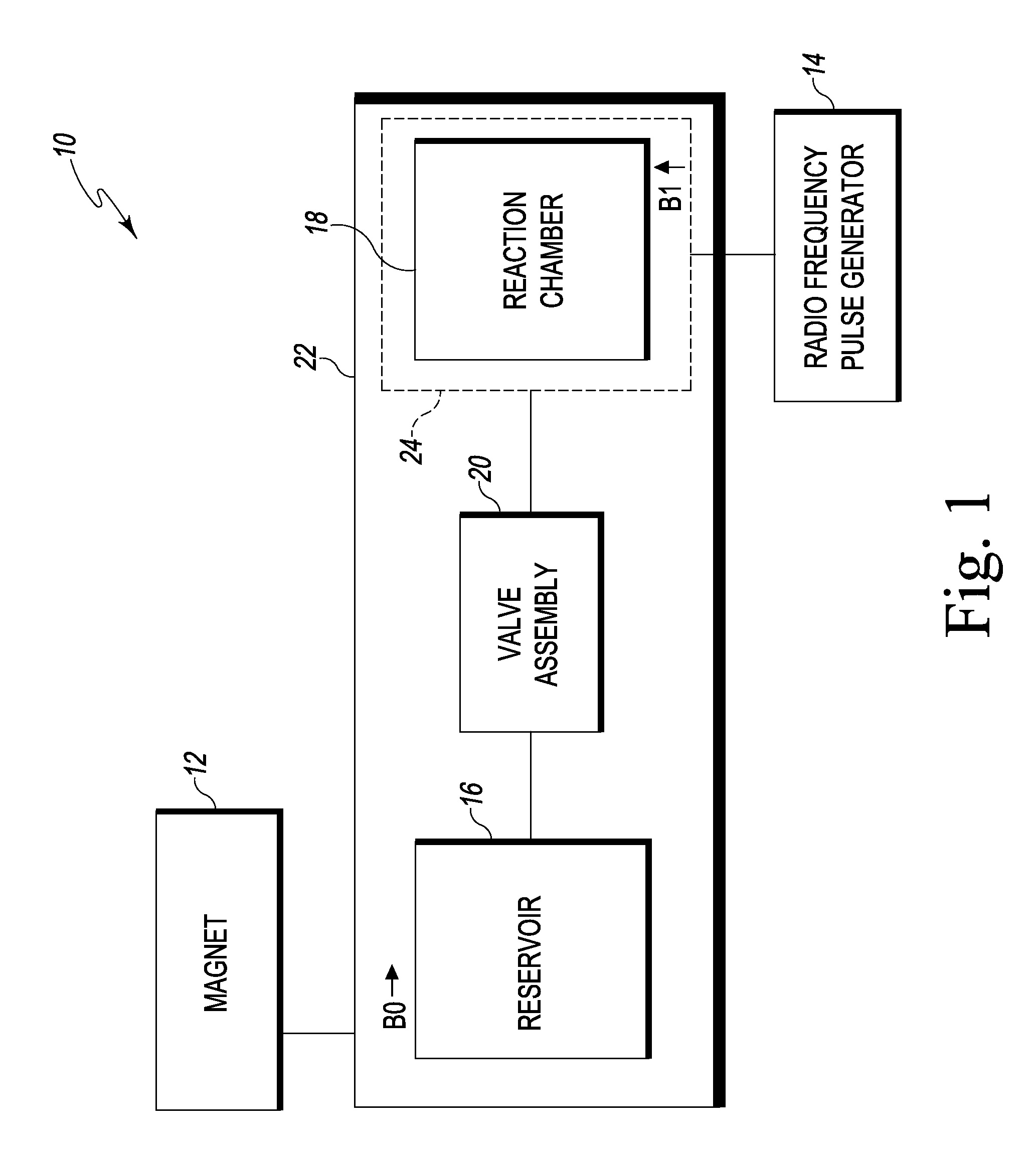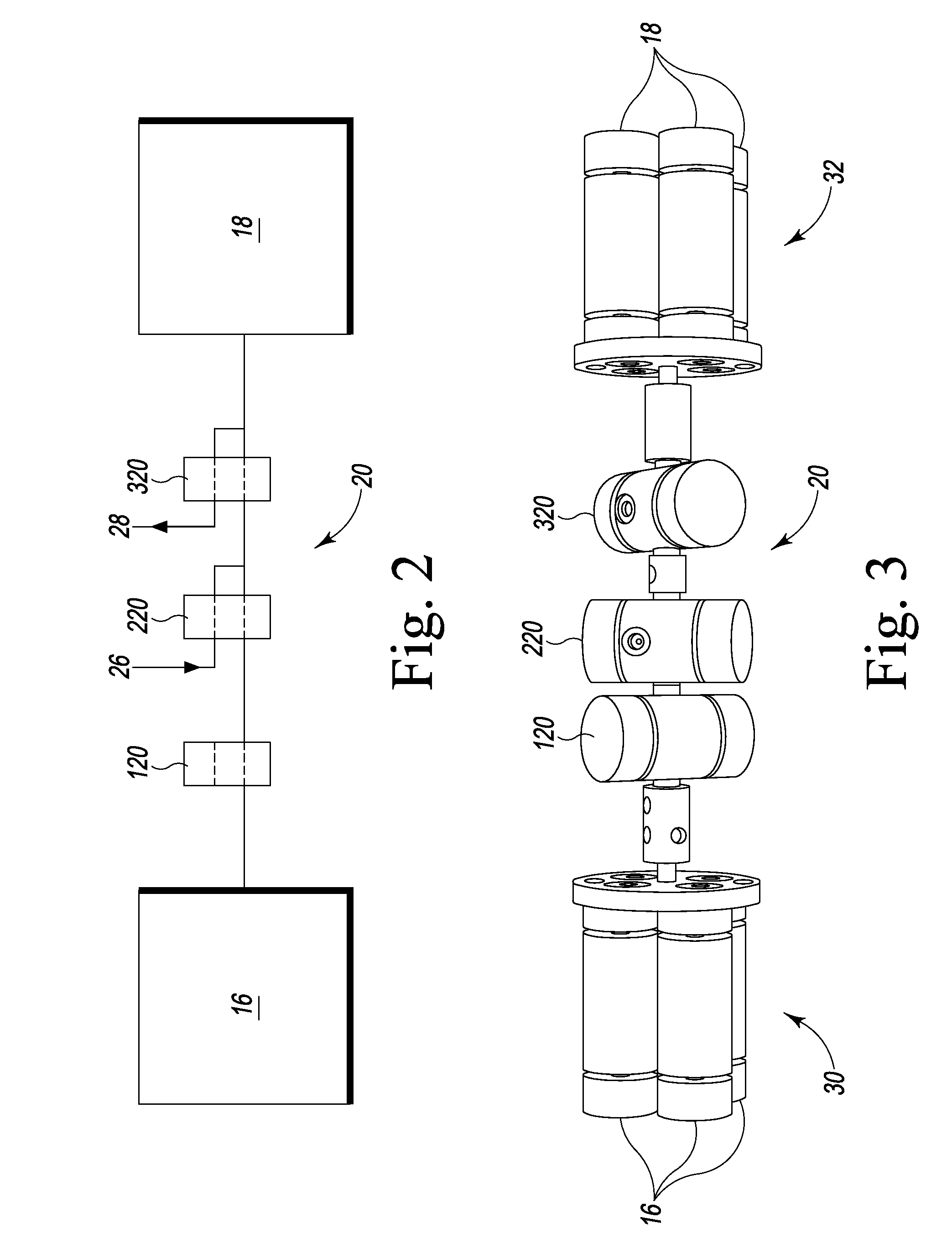Para-hydrogen polarizer
a para-hydrogen polarizer and polarizer technology, applied in the field of para-hydrogen polarizers, can solve the problems of poor reproducibility of experimental results of para-hydrogen polarization experiments, performance decline, and not yet widely availabl
- Summary
- Abstract
- Description
- Claims
- Application Information
AI Technical Summary
Benefits of technology
Problems solved by technology
Method used
Image
Examples
Embodiment Construction
[0030]This disclosure provides reactor assemblies that can be used, for example, to efficiently prepare magnetically polarized compositions including, but not limited to, para-hydrogen-enriched compositions that may be used as contrast agents. The reactor assemblies include nonmagnetic reservoirs, reaction chambers and / or valve assemblies that enable reactants to be efficiently stored, mixed, and reacted in close proximity to, or within, NMR magnetic fields. Specifically, and in contrast to conventional polarizers, the reactant reservoirs, reaction chambers and / or valve assemblies each may be positioned within a static magnetic field, thereby permitting the use of substantially less conduit (i.e. dead-volume) between the reactant reservoirs and reaction chamber. The non-magnetic valve assemblies may include one or more valves configured to withstand pressures of at least about 500 psi, which are commonly achieved when rapidly delivering reactants to a reaction chamber in a polarizer...
PUM
 Login to View More
Login to View More Abstract
Description
Claims
Application Information
 Login to View More
Login to View More - R&D
- Intellectual Property
- Life Sciences
- Materials
- Tech Scout
- Unparalleled Data Quality
- Higher Quality Content
- 60% Fewer Hallucinations
Browse by: Latest US Patents, China's latest patents, Technical Efficacy Thesaurus, Application Domain, Technology Topic, Popular Technical Reports.
© 2025 PatSnap. All rights reserved.Legal|Privacy policy|Modern Slavery Act Transparency Statement|Sitemap|About US| Contact US: help@patsnap.com



